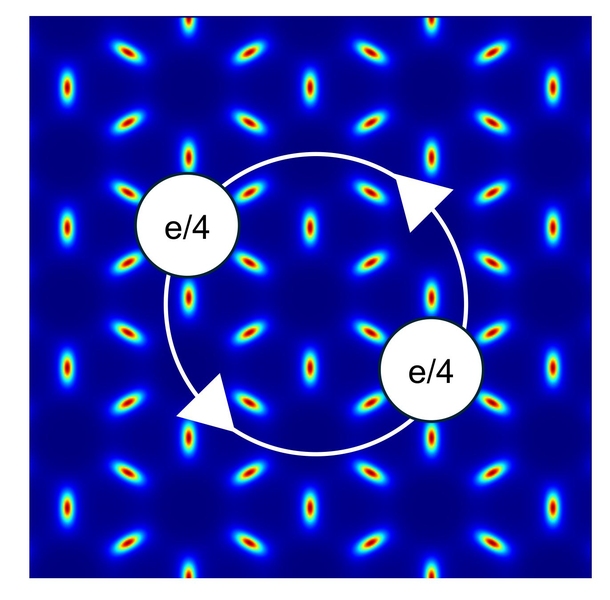MIT physicists predict exotic form of matter with potential for quantum computing

MIT physicists have proposed the possibility of creating a unique type of matter that could serve as the foundation for building qubits—quantum bits—for next-generation quantum computers with enhanced power compared to current designs.
This research builds upon a 2023 discovery of materials capable of hosting electrons that can split into fractional components, referred to as anyons. Importantly, this phenomenon occurs without the need for a magnetic field, unlike earlier studies that relied on such fields. The initial discovery of electron fractionalization, which won the Nobel Prize in 1982, marked a breakthrough, but its reliance on magnetic fields limited its applications. The new approach expands the potential uses of these materials for fundamental research and technological advancements.
The recently discovered anyons are classified as Abelian anyons. In a study published in the October 17 issue of Physical Review Letters, the MIT team demonstrated that it might also be feasible to generate a more complex type known as non-Abelian anyons. These non-Abelian anyons are particularly promising for quantum computing because of their ability to "remember" the paths they traverse through spacetime. This memory feature could enable the development of more stable and versatile quantum computers.
Professor Liang Fu, a leading researcher in the MIT Department of Physics and the Materials Research Laboratory, highlighted the unexpected success of 2023 experiments, noting that they surpassed theoretical predictions. Fu emphasized the need for boldness in theoretical approaches. Graduate students Aidan P. Reddy and Nisarga Paul, along with postdoctoral researcher Ahmed Abouelkomsan, contributed significantly to the work.
The research aligns with advancements in two-dimensional (2D) materials, which consist of layers only a few atoms thick. These materials can be manipulated to form unique structures, known as moiré materials, with remarkable properties. Paul likens working with 2D materials to building with Lego blocks, creating intricate "sandwich" configurations. Such materials have already demonstrated their capacity to host Abelian anyons, as shown in the 2023 experiments and subsequent research by a team led by MIT Assistant Professor Long Ju.
In this latest study, the researchers predict that non-Abelian anyons could form in moiré materials composed of molybdenum ditelluride when electrons are added at specific densities, such as 3/2 or 5/2 per unit cell. Paul and Reddy expressed enthusiasm for their findings, describing the challenge of interpreting complex results and bridging concrete numerical data with abstract theoretical concepts.
The work, which opens new avenues for robust quantum computation, was supported by the U.S. Air Force Office of Scientific Research and other organizations, including the Kavli Institute for Theoretical Physics and the Simons Foundation.
Source : https://news.mit.edu/2024/physicists-predict-exotic-form-matter-1118